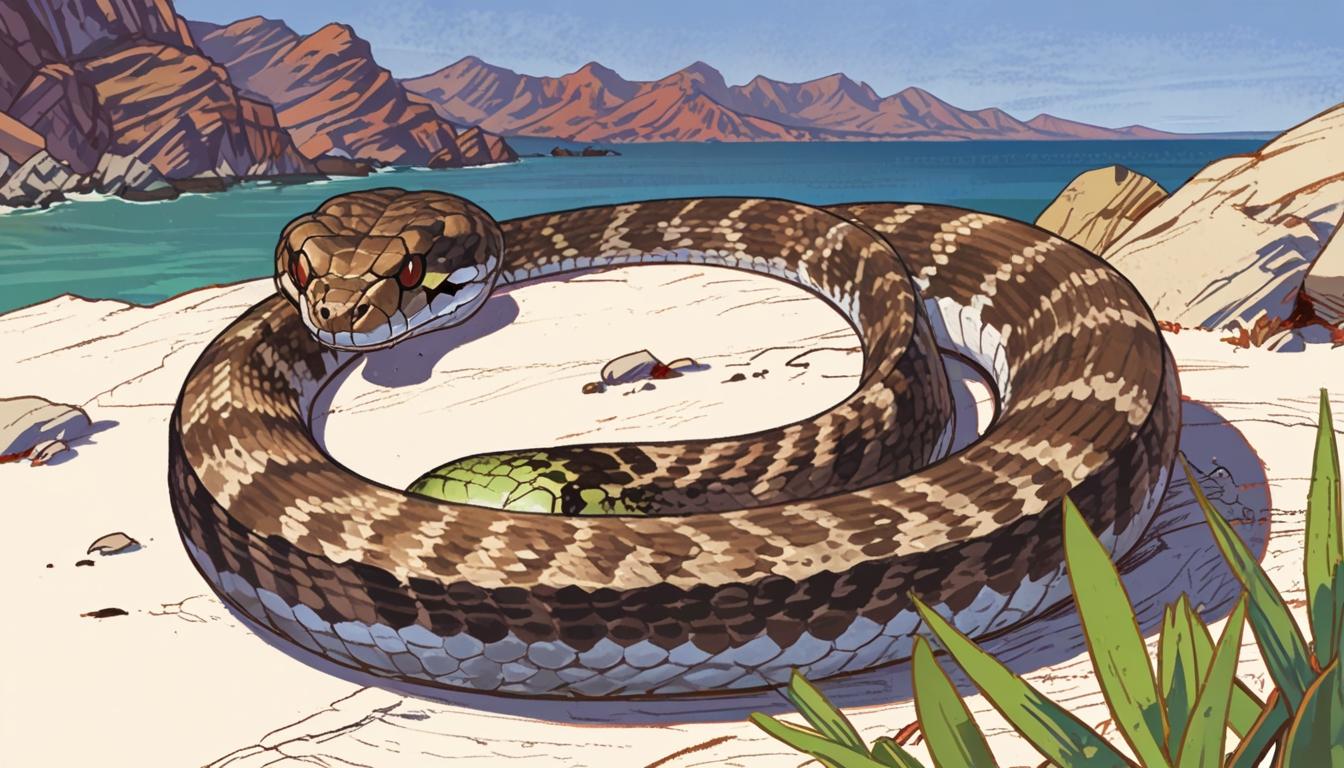Venomous rattlesnakes inhabiting several isolated Mexican islands have given biologists from Florida unexpected insights into the evolutionary process of animals. A collaborative research team from the University of South Florida (USF), alongside Mexican scientists, undertook three camping expeditions across 11 uninhabited islands within the Gulf of California, an area recognised as the world’s largest rattlesnake habitat.
The scientists captured dozens of wide-bodied rattlesnakes during cooler temperatures at night and carefully extracted their venom for detailed analysis. Contrary to their initial hypothesis that these snakes would develop more complex venoms to accommodate a wider range of prey in biodiverse environments, the venom samples revealed a different story. Instead of evolving venom with many different toxins, the snakes produced simpler venoms with fewer, more targeted toxins.
Mark Margres, assistant professor at USF’s Department of Integrative Biology, explained the significance of this discovery. “This isn’t just about rattlesnakes, it’s about understanding the fundamental ways life evolves when isolation and biodiversity start to shift.” He elaborated that isolated habitats, much like fragmented ecosystems impacted by human or natural disturbances, force species to adapt in specific ways. “Habitat fragmentation is like breaking apart a completed puzzle. A healthy, intact ecosystem is like a 1,000-piece puzzle where every piece is in place, you can clearly see the full picture. But when you start fragmenting it, pieces go missing or get rearranged, and the image becomes distorted. That distortion represents the disruption of ecosystem function.”
Samuel Hirst, a doctoral student from USF and an organiser of the expeditions, highlighted the unique research conditions the Baja California islands offered. “The Baja California islands are pristine and largely untouched by human activity, making them an extraordinary place to study evolutionary processes in isolation.” Initially, the team anticipated that larger islands with greater habitat diversity would yield snakes with more complex venom compositions. “However, we found the opposite pattern. This unexpected result suggests that factors such as competition or ecological specialization may be at play, opening exciting avenues for future research,” Hirst said.
During the research, the team captured and released 83 individual rattlesnakes, the largest measuring up to four feet in length. These snakes belonged to four species: speckled rattlesnake, red diamond rattlesnake, Baja California rattlesnake, and south-western speckled rattlesnake. Venom was collected by encouraging the snakes to bite onto specialised sample cups, after which the venom was dried and analysed.
Margres emphasised the rapid evolutionary changes observed in rattlesnake venom and the urge to understand these dynamics promptly. “Evolution typically requires many generations, and all of these changes, the most severe human impacts, are happening right now. We don’t want to wait 20, 100, 1,000 years from now to understand the evolutionary consequences.”
Published this week in the academic journal Evolution, a part of Oxford University Press’s research platform, the study points toward future genetic analyses. Margres noted that the team had also collected blood samples from each snake, which differ from mammalian blood by containing nucleated cells rich in DNA. “Our next question is whether we see the same thing at the genetic level... We’ll look at the genomes of each of these individual snakes and see if genetic diversity shows similar patterns.”
He further explained the conservation implications of this genetic research: “In conservation biology we want to maintain or increase genetic variation for endangered species, because things like inbreeding can have really dire consequences, so we want to see things like island area, do they also predict genetic diversity, not just venom diversity?”
The findings present new perspectives on how species adapt to isolated environments and highlight the intricate relationships between biodiversity, venom evolution, and genetic diversity in rattlesnakes across the Gulf of California.
Source: Noah Wire Services
